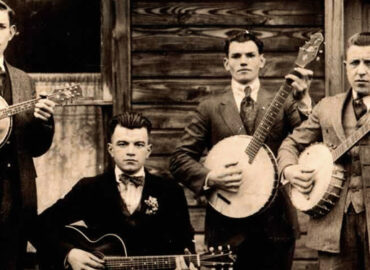Rock ‘n’ roll music emerged in the 1950s and quickly became one of the most popular genres of music around the world. It has a distinct sound that is characterized by a combination of different elements including strong rhythm, electrified instrumentation, and vocal harmonies. Rock ‘n’ roll music has a range of unique features that make it stand out from other genres.
The use of electric guitar
One of the most defining features of this music is its heavy use of the electric guitar. In most songs, the guitar is the lead instrument and is played using a variety of techniques including power chords, finger-picking, and tapping.
The electric guitar creates a distinctive sound that is amplified through speakers and creates a powerful and dynamic effect. This allows the guitar to take on a central role in the music and makes it a defining feature.
Rhythm in rock ‘n’ roll
Another important element of rock ‘n’ roll music is its focus on rhythm. The music is designed to get people moving and dancing, and this is achieved through the use of strong, driving beats. The drum kit plays an important role in producing this effect and it is often considered the backbone of the rhythm section.
In addition, rock music often features other percussion instruments like tambourines or maracas. They make considerable additions to the overall energy of the music.
Vocals and lyrics
Rock ‘n’ roll music also has a distinctive vocal style. Many rock songs feature vocal harmonies, where two or more singers sing different parts at the same time. This creates a rich, layered sound that adds depth to the music. In addition, rock singers often use a range of vocal techniques like falsetto, vibrato, and growling to add texture and emotion to their performances.
The lyrics of rock ‘n’ roll songs are often rebellious and focused on youth culture. Many of the early songs were about teenage romance, rebellion, and freedom. This made the music incredibly popular with young people who identified with the themes of the music. As rock music evolved, the themes of the lyrics became more diverse and covered a wide range of topics from politics to social issues.
The significance of improvisation
Rock ‘n’ roll music also often features the use of improvisation. This means that the musicians will play solos or create new parts on the spot, rather than sticking to a pre-written script. This gives the music a sense of spontaneity and energy, and makes every performance unique. Another important feature of rock ‘n’ roll music is its use of distortion and feedback.
This is achieved by intentionally creating a distorted sound by turning up the volume on the amplifiers, or by using effects pedals. This creates a raw, edgy sound that is a hallmark of the genre. Many rock ‘n’ roll musicians have become famous for their use of distortion and feedback. It has become an iconic feature of the music.
Rock ‘n’ roll music also has a sense of energy that is difficult to replicate in other genres. The combination of driving rhythms, electric guitars, and powerful vocals creates a sense of urgency and passion that is infectious. This energy is what has made rock ‘n’ roll music so enduringly popular over the years.





